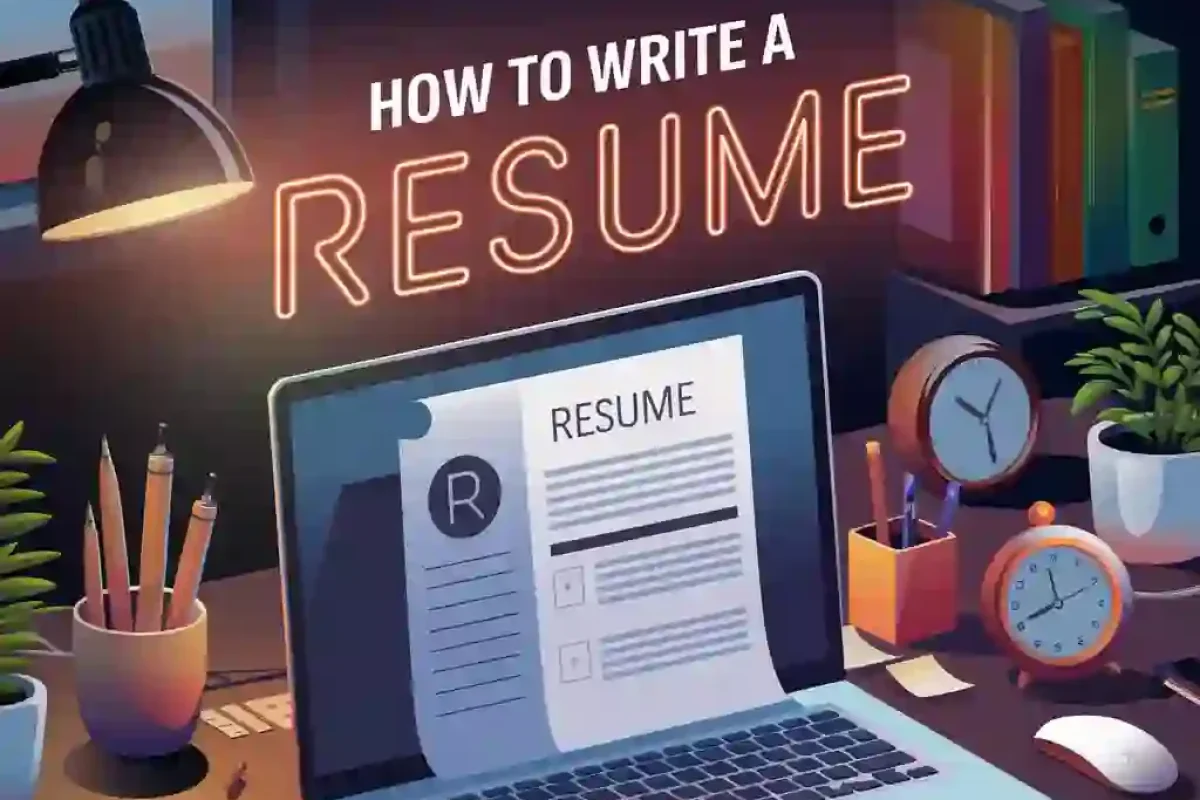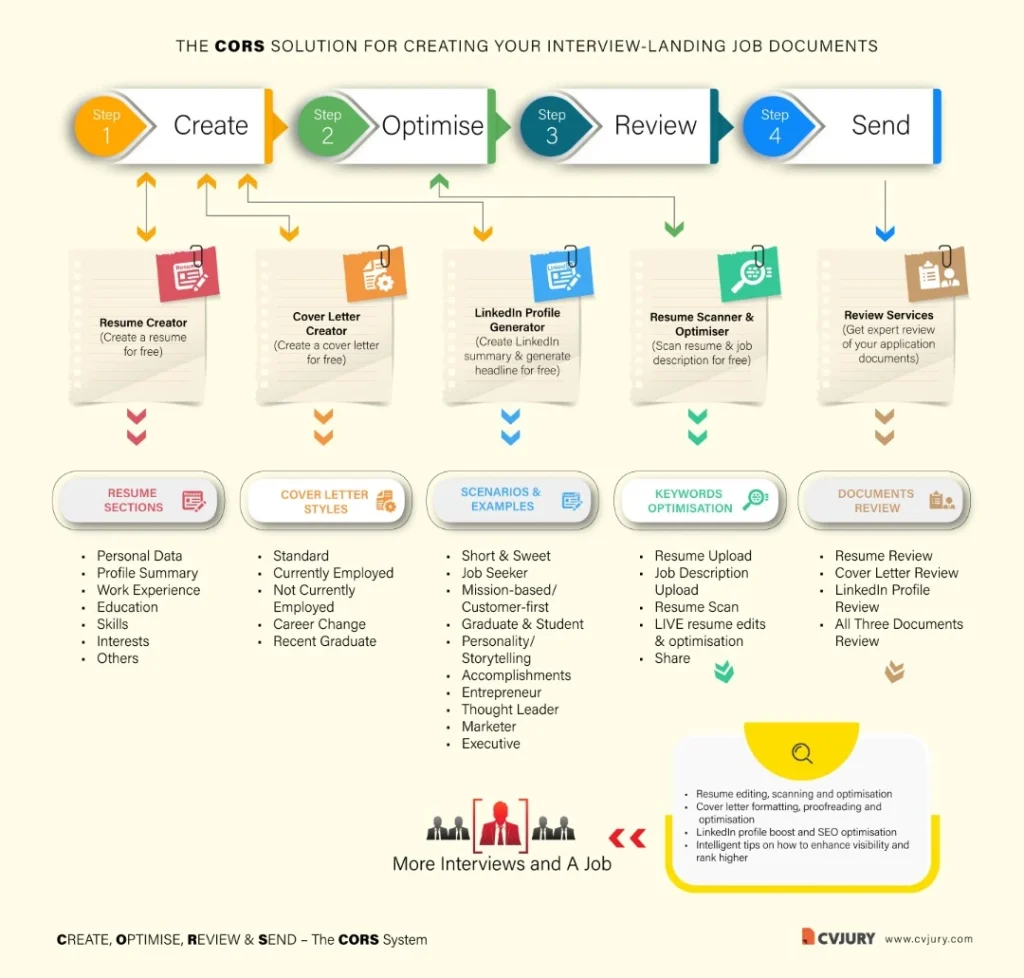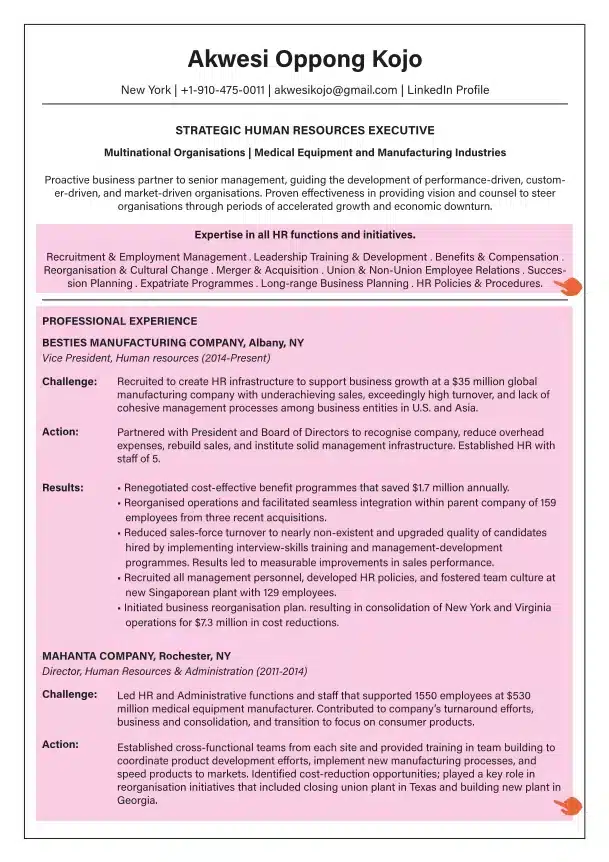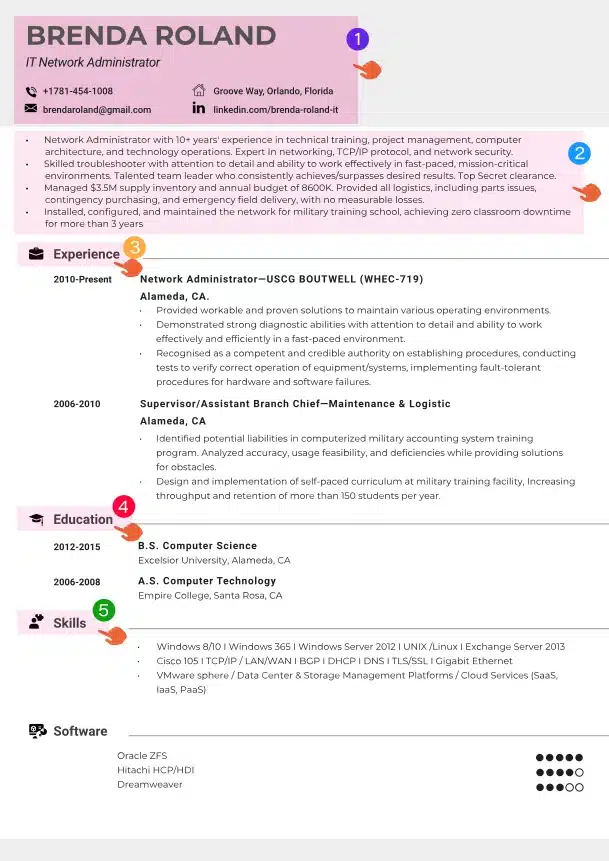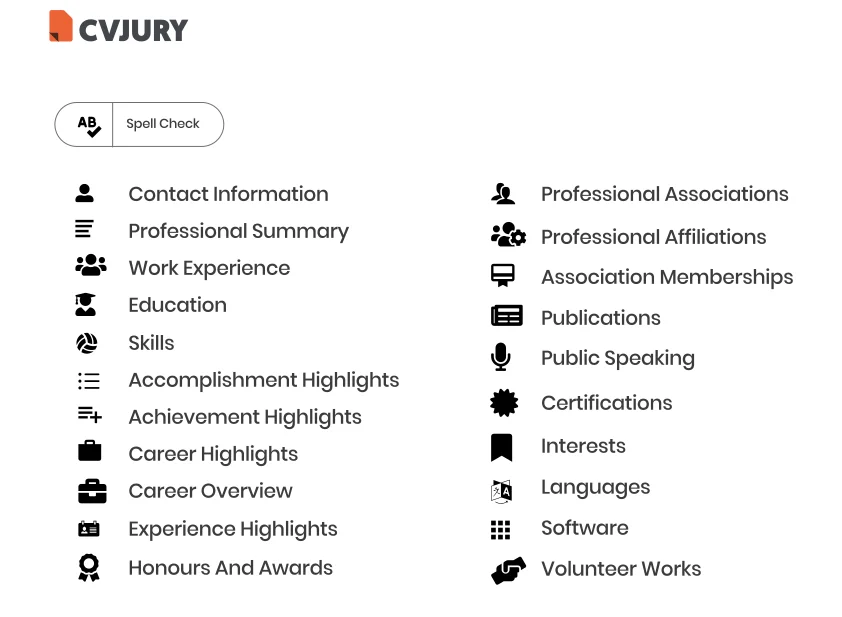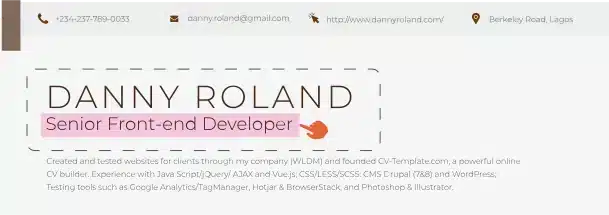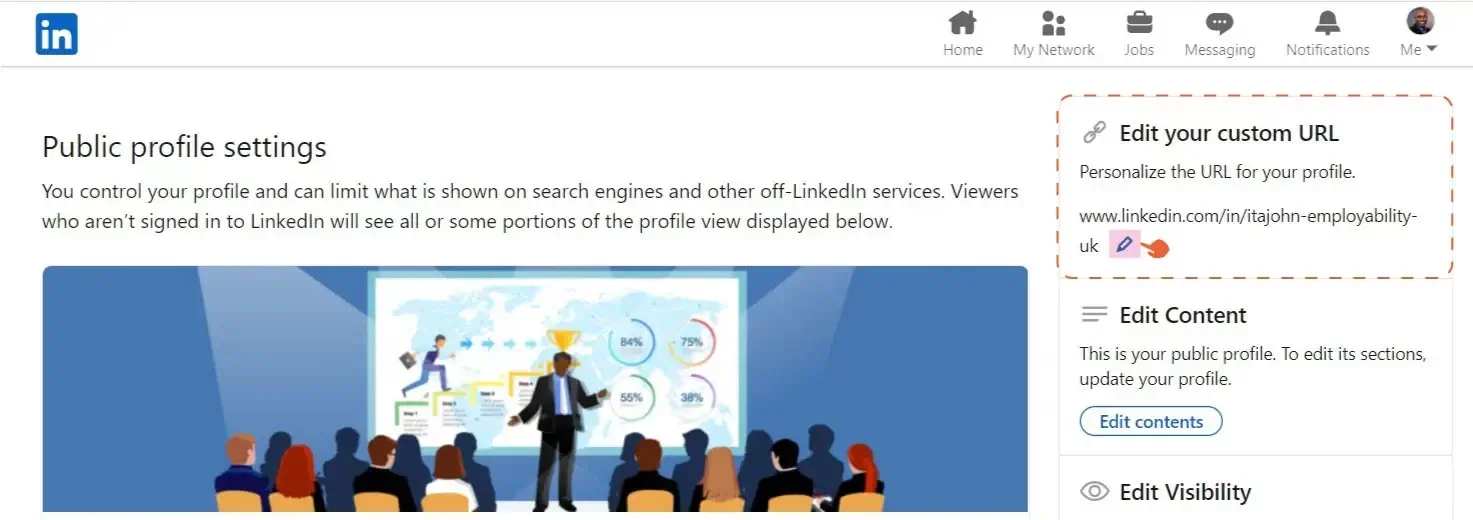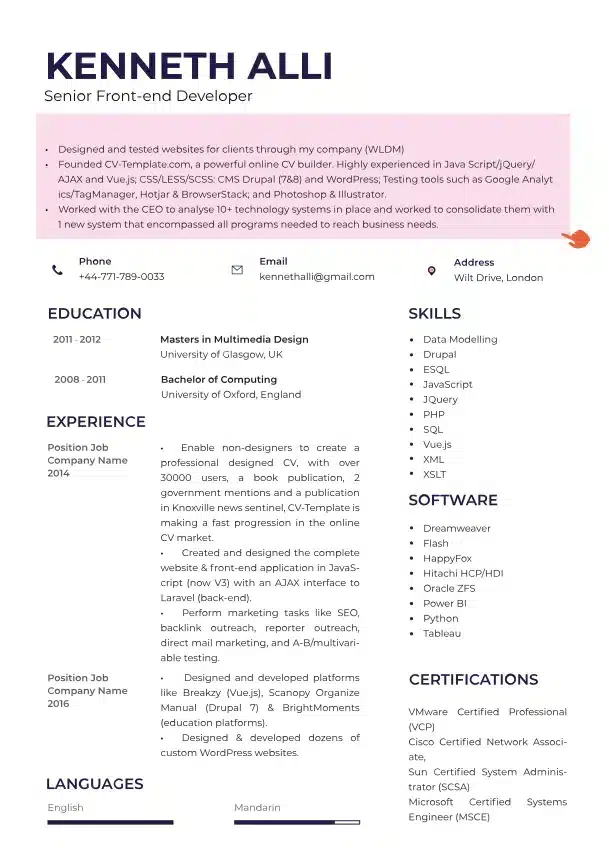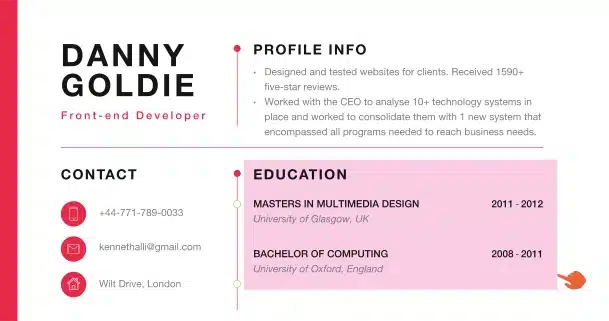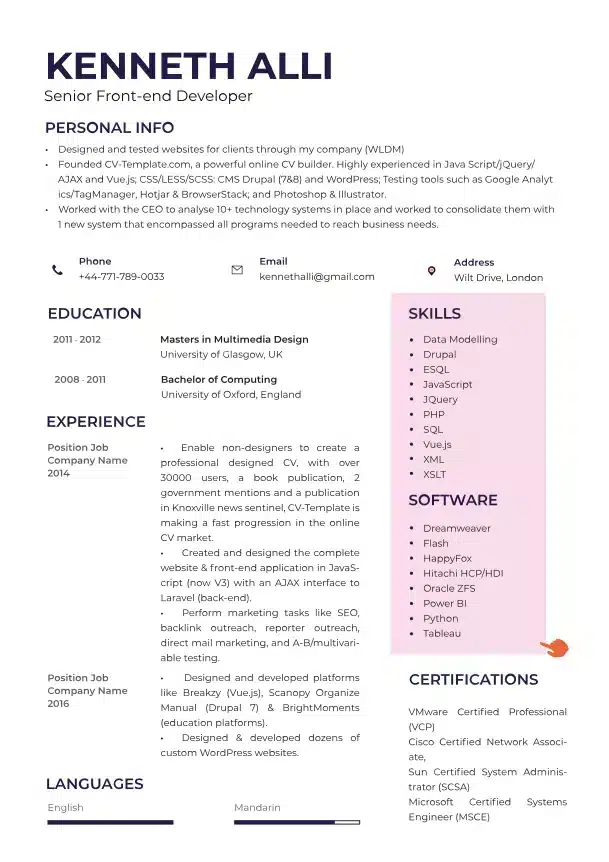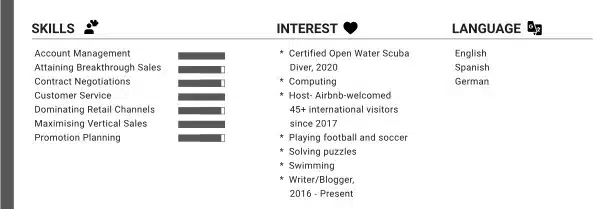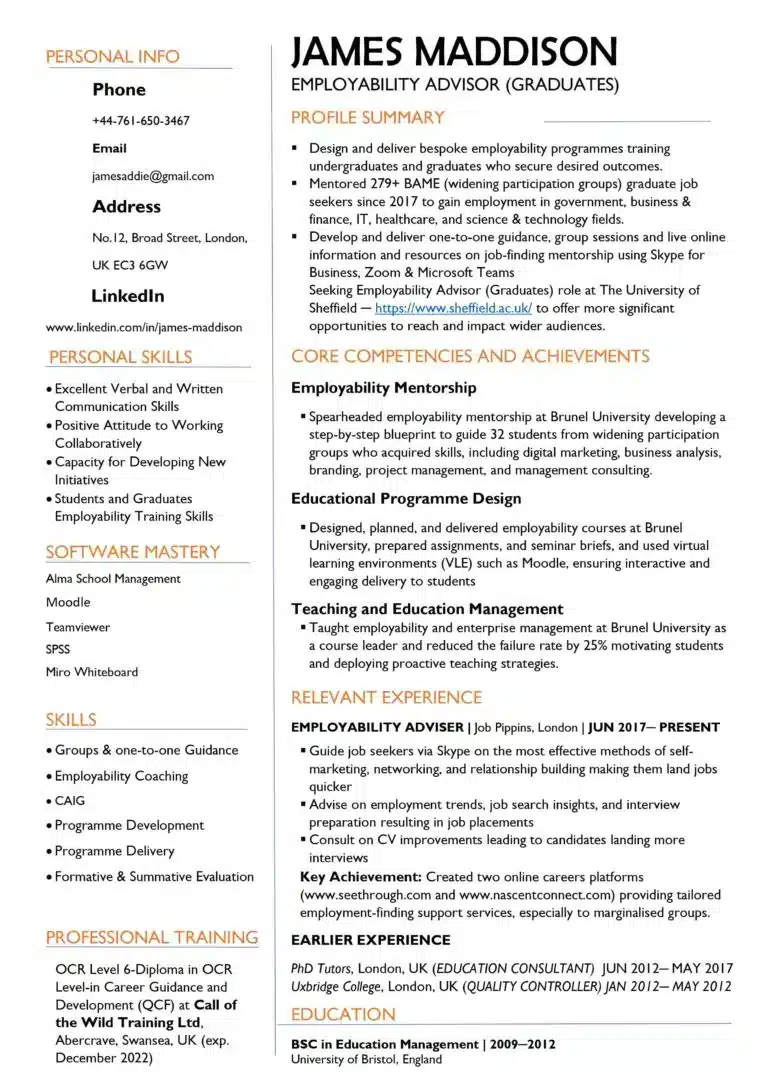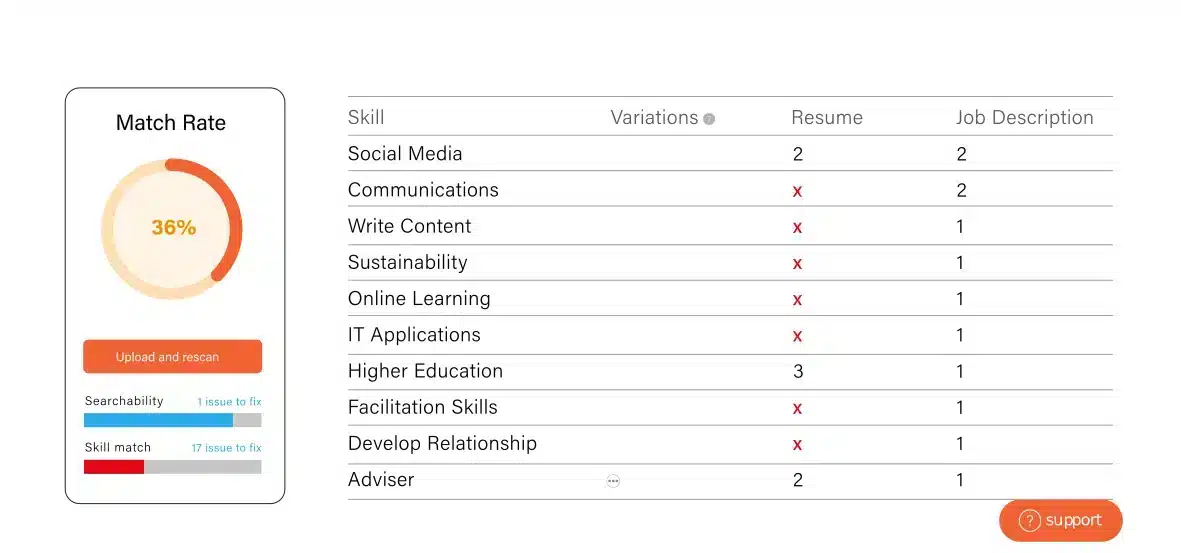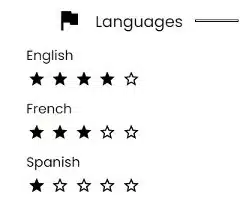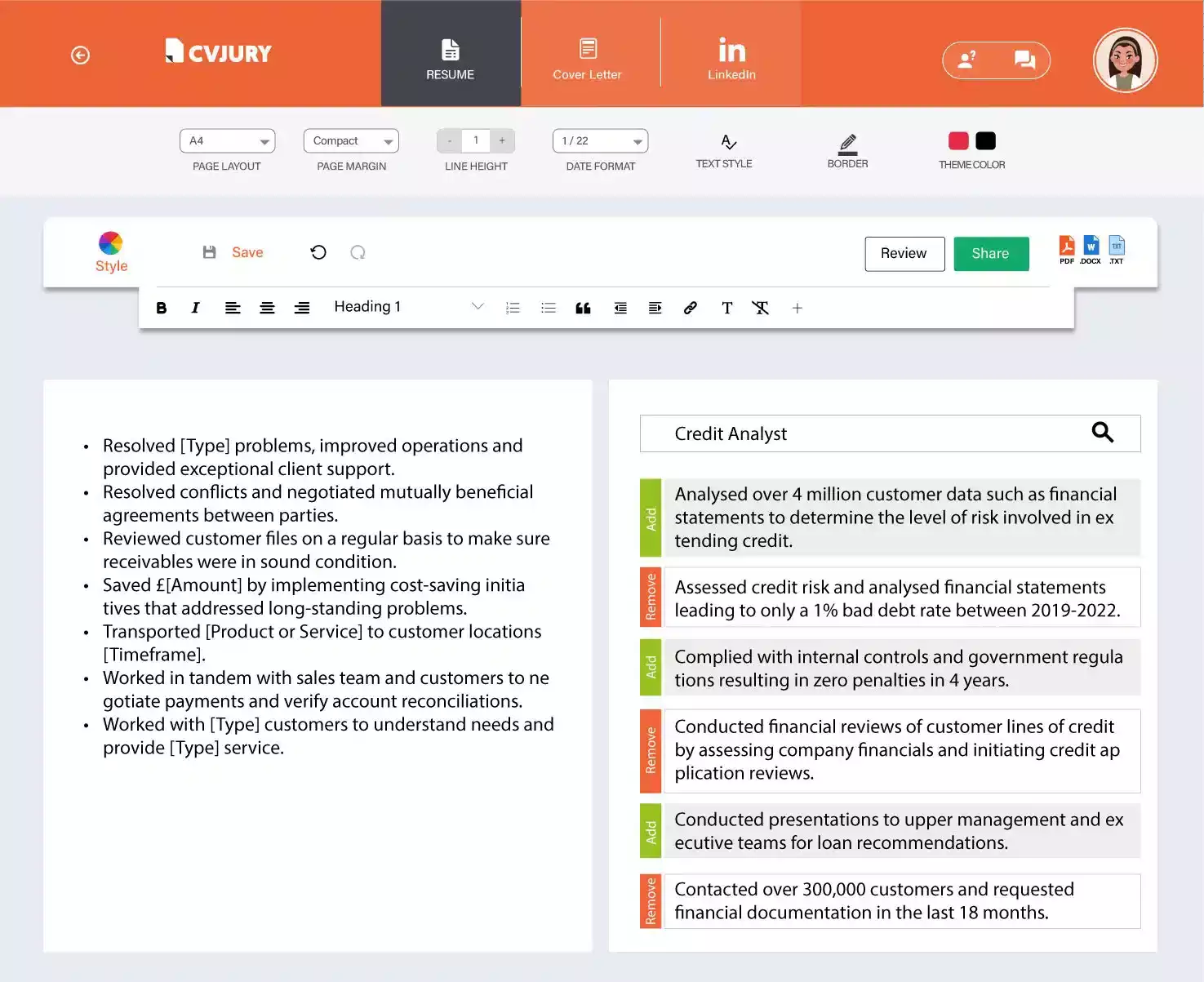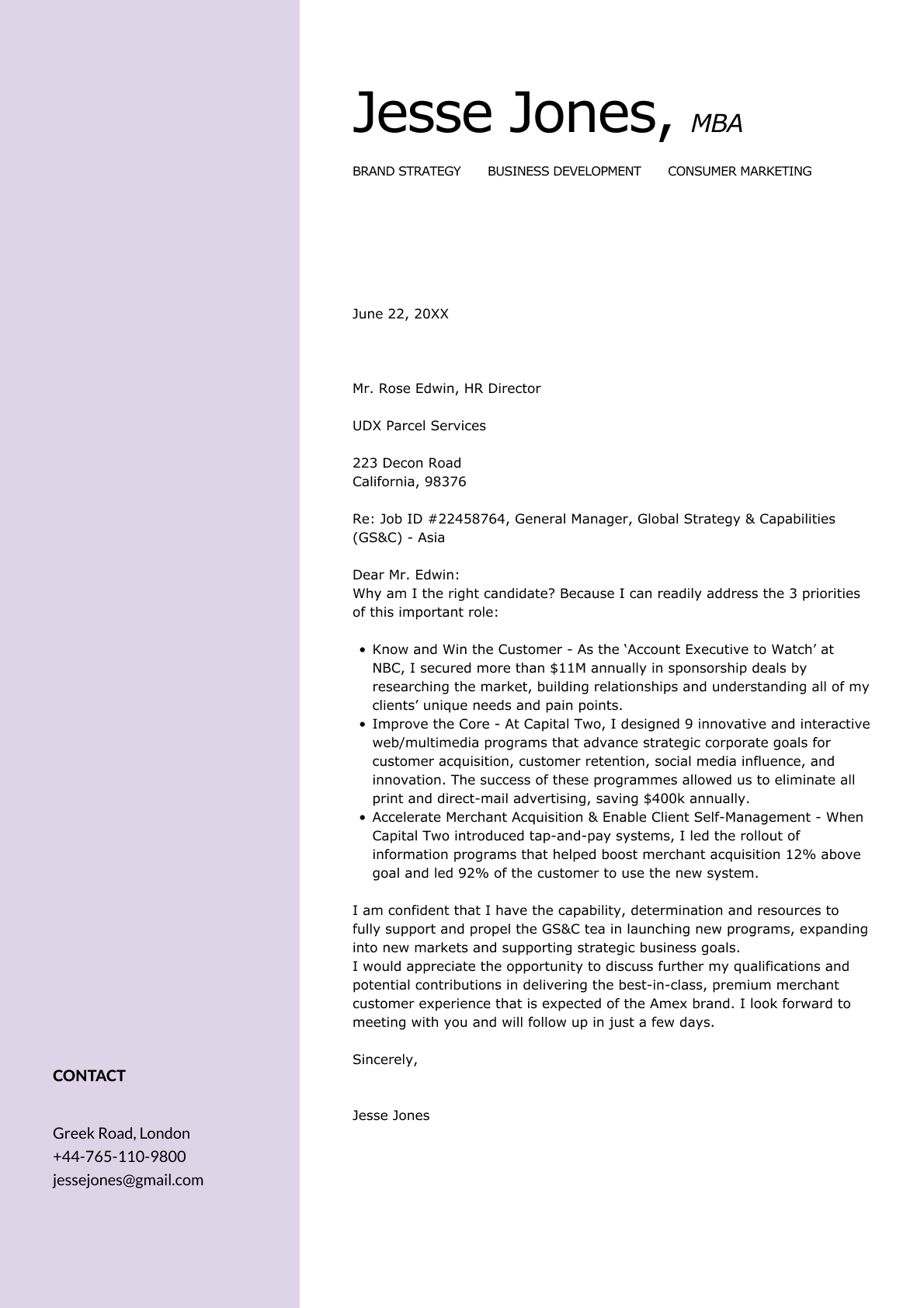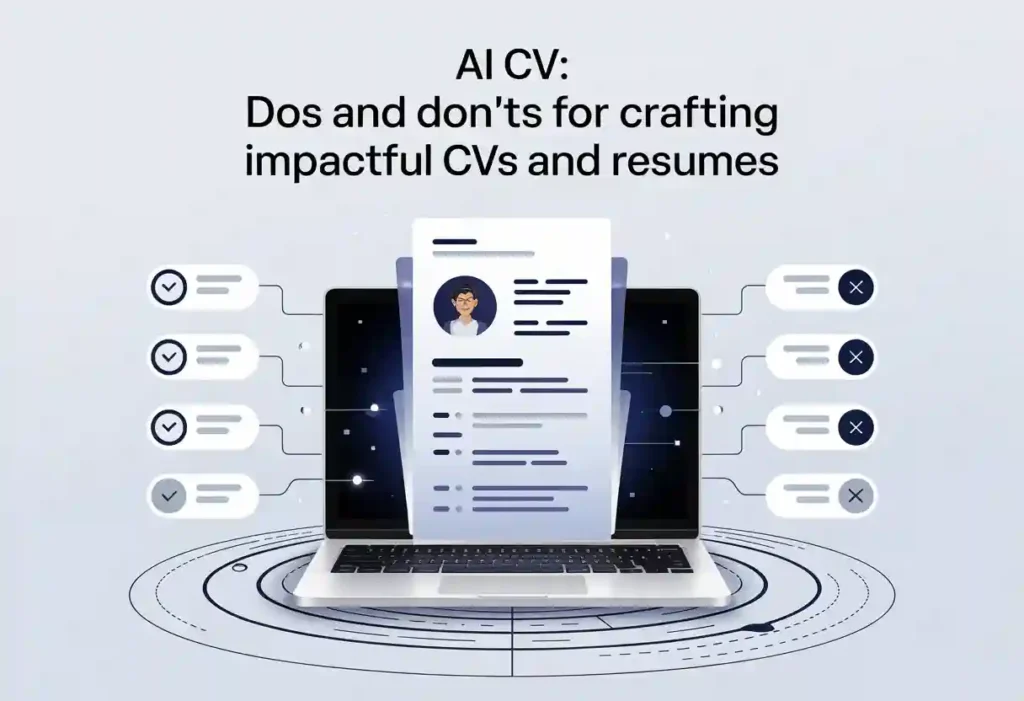Perfecting the Art of Resume Writing: Your Ticket to Landing More Interviews and a Job
Whenever you do a job search, ask yourself, “Will my resume be enough to land me an interview and the job?”
Our article attempts to help you answer this question without any sweat.
The truth remains that the only solution to writing a resume that wows recruiters is to create an excellent one.
Master how to write a resume that employers love, and you’ll start landing more interviews.
A fantastic resume that shows what you offer to potential employers articulates your vision, skills, expertise, and character.
In brief, this document should tell your story in a way that successfully markets you to an employer.
This objective was one of the reasons we set up CVJury to offer you a free resume builder, a matching cover letter builder, and a LinkedIn profile builder so that you can easily create a job-winning application for free.
For instance, if you are applying for a marketing role, your goal is likely to generate and convert leads.
The same applies to resume writing, as you are marketing yourself to the recruiter. So, you’ll need to know the tips for the best resume writing.
Marketing oneself is an art. To excel in this art, you must understand how to grab attention and keep a potential employer glued to your CV to enhance landing the coveted interview and, thus, the dream job.
Fortunately, this should no longer be your biggest worry. This article contains everything you need about resumes and practical resume tips and tricks.
It looks at unique ways to create a converting resume.
Understanding what a resume entails: Tips for good resume writing
A summary is a crucial document crafted for hiring; job seekers use it to respond to a job ad.
It contains their qualifications and background information.
It is a way of communicating information that is most important and relevant to future employers in a way that is easy to read and understand.
Its main aim is to explain why an applicant is uniquely qualified to fill the vacant position, depending on their experiences and hard and soft skills.
As a job seeker, you should know that a well-structured resume might be all the bridges you need to land your dream job.
Making a resume correctly for your job search can guarantee replies from almost all the companies you apply to.
A weak and feebly structured resume will leave you waiting for weeks or months for replies that may never come.
The resume objective is to capture the HR manager’s attention and lock them in your world of expertise. You will receive daily invitations to interviews.
Your resume must be both readable and relevant.
The CORS system [from CVJury] below shows how our tools help you create, optimize, and review your CV/resume, cover letter, and LinkedIn profile.
With this, you can effortlessly send tailored job applications to land more interviews and the job.
How to Write a Resume Effectively
- Understand how to prepare your resume before drafting it
- Select the template format that is the best for your qualifications
- Choose a resume layout
- Fill in your contact information
- Write the summary
- Complete the work experience section
- State your level of education
- Highlight relevant skills
- Consider optional sections
- Make it a job-specific resume
- Keep your resume concise
- Add quantifiable achievements and use dynamic words
- Proofread
- Attach a corresponding cover letter
- Note resume dos and don’ts
- Forward your draft to our expert resume writers for review
To make a professional resume, follow the steps outlined above. Let’s discuss each step.
1. Understand How to Prepare Your Resume Before Drafting It
Before making a resume, you need to do several things. Remember, you must tailor every resume you write to the position you are applying for.
Keeping that in mind, the following resume tips for professionals simplify the resume writing process.
Pro Tip
To create a professional resume, you must first be prepared. Begin by making a list of the following:
- Relevant skills: technical, hard, and soft (now called power skills)
- Main accomplishments from previous jobs
- Details about previous job titles, hire dates, responsibilities, and locations
- Qualifications like certifications, college degrees, or licenses
You will use all this information as you make your resume. By noting it beforehand, you can save time later and avoid disrupting the creative writing process.
Pro Tip
- Find adequate time to write your resume.
- Sit in a quiet place without distractions to concentrate when writing.
- Write and avoid trying to perfect your resume while drafting it – you can perfect it later.
- After the resume writing process, step away for several hours and return when you are fresh to perfect your writing.
2. Select the Template Format That is the Best for Your Qualifications
Before you begin your work on the resume, you should decide on the structure or format. Basic text editors might be the most popular way of generating a resume, but they are far from the best you can get.
It demands that you spend many hours trying to circumvent the format. Minor changes automatically lead to the total restructuring of your resume.
Resume builders are preferable to text editors. They are easy to use, fast, and better looking, not to mention that they can hold a larger volume of information in a smaller space than the typical text editor.
Generally, we have three formats in which you can shape your resume based on your experience level and the job type that you are considering:
The reverse-chronological format
It is the most popular format and ideal for people with extensive work experience relevant to the position they are applying for.
Key Features
- At the top: Name and contact information
- Add additional pertinent sections
- Emphasises professional growth and relevant work experience
- Ideally, highlight the ‘Work Experience’ after the ‘Professional Summary.’
- Most recruiters and hiring managers are familiar with it.
- A reverse-chronological sequence is used in the Work Experience section
Drawbacks
- You can’t cover employment gaps
- Doesn’t give much attention to competencies/skills
Suitable for:
Candidates with a solid, unbroken work experience history
The Skills-based or Functional Format
It is also called the ‘competency-based’ resume format. This is the best option for individuals who do not have relevant work experience, either because they are recent graduates or are still students.
It is also suitable for those who want to make career changes.
Key Features
- At the top: Name and contact information
- A summary of the profile comes next
- Emphasises your skills, capabilities, or expertise
- Plays down prior employment experience
- States the essential qualifications for the position as transferable skills (e.g., people, self, and systems-oriented skills)
- Contains concise notes on each transferable skill
- You can add additional desired sections
Here are four CASES in the functional resume style that may be helpful. And more examples of how to write yours.
Drawbacks
- Most recruiters and hiring managers don’t welcome it.
- Little or no emphasis on work history
Suitable for:
Candidates with little or no work experience or employment gaps
The Combination Format
This is a suitable resume format for mid-level job seekers with diverse skills. A combination resume can be helpful if the position you are applying for demands expertise in multiple fields you would like recruiters to know about.
We can explain this format by the example of a job title as a senior manager, with the requirements of being skilled in sales, management, or software development.
Considering all these skill sets, you can determine the best format to present them. However, you can use the reverse-chronological format since it is the most common.
Also, most HR managers are used to working with the reverse-chronological format.
Key Features
- At the top: Name and contact information
- Combines the best components of the functional and chronological formats
- First is the ‘Key Skills’ section
- Next is the Work Experience section
- It gives equal emphasis to the ‘Key Skills’ and ‘Work Experience’ sections
- Has lots of room for resume keywords
- You can add additional pertinent sections
Drawbacks
You can’t hide employment gaps
Suitable for:
Most job candidates
3. Choose A Resume Layout
One thing that instantly catches a job recruiter’s attention after getting hold of your resume is the layout you have adopted.
They will consider whether your resume is cluttered or organized. And whether you have made it too short or too long. Or you have made it into something boring. Such a resume is easy to ignore.
As far as the layout of your resume is concerned, some of the best practices are shown below:
- Make it one page. As you respond to a job ad, only go for two or more pages if you are optimistic that the value-added will be significant in making your case. HR personnel in some giant firms receive thousands of resumes each month for each job ad. This means they do not have all the time to go through your life story. You should also pick a single heading section, like H2, and stick to it for the subsequent section headers.
- Give room for ample white space, most notably around the margins.
- Use a font that is easy to read. Distinct but straightforward fonts such as Roboto, Comic Sans, Helvetica, and Ubuntu will do just nicely.
- Another critical factor is the use of the perfect font size. Using font sizes 11 or 12 for standard text is good, while section titles work better with sizes 14 to 16.
- Another vital thing is ensuring your resume is saved in PDF format. Keeping it as a Word document is a popular way of doing it, but this creates room for its formatting to be messed up.
Another issue you should seriously think about when the layout is concerned is whether you want to create a resume that looks traditional using a free resume template.
Or if you want to develop something that appears to be a bit modern.
The first option is best for those whose career choices lie in more traditional industries, such as finance, banking, and the legal field.
However, suppose your future lies in fields that massively respect innovation and imagination, such as the tech industry. In that case, you should use a layout that speaks the language of creativity.
After dealing with all the fundamental issues, the next step is to write the resume: what content should you include?
These will be divided into several sections, which are five critical segments.
Understand the 5 Basic Sections of a Typical Resume [in no order]
- Personal and contact information
- Summary or objective of your resume
- Work Experience (and achievements)
- Education
- Skills [soft (power), hard/technical, and software skills]
Optional sections are publications, languages, hobbies, and the like. Below is a comprehensive list of resume sections we offer on CVJury’s resume builder app, shown in the image:
We now discuss each of these sections in detail below. This knowledge will ensure you gain the skills to write a resume that lands you more interviews.
4. Fill in Your Contact Information
This is an essential section of your resume. You might perfect everything else, but the HR manager needs to contact you for further communication due to minor mistakes like misspelling your email. Then, all your efforts can be in vain.
You should double-check your contact information, ensuring everything is up-to-date and correct. It does not harm to triple-check.
The information in this section can be divided into the must-have and optional sections.
The must-have section should contain the following:
- Your first name and last name: The middle name is always optional.
- Your phone number: Use a landline or cell phone to answer quickly.
- Your email address: Keep it business-like. A recruiter will find [email protected] considerably more appealing than [email protected]. Create a free professional address if you don’t already have one. AOL and Hotmail are two less modern email providers from which to stay away.
- Your current location: To determine whether you are within the vicinity of the company or if it will have to incur some expense to relocate you.
- A complete address is preferred, but not necessary. Typically, your city and state of residency are sufficient. Remember to include “Willing to Relocate” or “Open to Relocation” if you choose.
As for the optional information, you might include the following:
- Your professional title or resume headline. We strongly recommend adding your resume headline. This might be your job role or the position you desire, written word-for-word. It can be the exact job title you’re applying for if that’s your job role. This helps if you are uploading your resume to an ATS job portal.
- LinkedIn profile URL. This might add value to your application, provided it is regularly updated.
You may, for instance, highlight your area of expertise in your profile’s URL. Say, for example,
linkedin.com/in/carosmith-nodesjs-developer √
linkedin.com/in/naomilee-job-coach √
It’s not particularly difficult to generate a customized URL.
Select the “Edit Profile” button and make the necessary changes.
Note, for example, the second URL doesn’t contain LinkedIn’s default random numbers:
linkedin.com/in/lizzy-john-y32892g8/ X
linkedin.com/in/lizzy-john-ms-excel-trainer √
How to Change Your LinkedIn URL to Custom
See examples of what to do to create a custom URL in the screenshots below.
1. Stay on your LinkedIn home page and click “Edit public profile & URL” at the top right corner.
2. You can customize your profile’s URL by clicking the Edit URL link underneath. You will see an edit icon (it looks like a pencil).
After that, you can change the name of your LinkedIn profile and even add your current or future job title.
Save it after editing the URL.
The LinkedIn algorithm favors profiles with custom URLs. An enhanced profile can make recruiters see you more frequently than they would have otherwise when searching for the keyword in your URL.
Meanwhile, learn how to create and optimize the other sections of your LinkedIn profile.
- Social media profile. You have an added advantage if you have an online portfolio that has been published. These can be different portfolios, such as GitHub for developers, Dribble or Behance for designers, or a personal blog for those pursuing careers in writing.
- Blog or website. If you have an online presence, you should mention it, as it might deepen your foundation as a specialist in a specific field.
There is some information that you should not include in this section, which includes
- Your date of birth. This should only appear if the job advertisement demands it. This removes the HR manager’s ability to use your age as a way of prioritizing, which leads to discrimination based on age.
- Do not include a headshot. HR personnel don’t need to know about your appearance to evaluate your qualifications for a job. It is frowned upon in countries like the UK and most European nations as it can cause age bias, which is against the law.
Adhering to these instructions and avoiding unnecessary information puts you within immediate reach of the HR manager.
5. Write the Summary
Some people also call it
- Profile
- Profile Summary
- Professional Summary
- Personal Statement
- Job Objective
- Objective
- Career Objective
We advise that you call it ‘Summary’ or ‘Profile.’
It is not a secret that first impressions significantly influence the opinion someone develops about you, regardless of your career or personal life.
A wrong first impression will surely stick in someone’s mind; their opinion about you evolves but rarely changes.
This also applies when you are job-hunting. Research shows that the average HR manager will take about six seconds to scan your resume.
This means that all your efforts in creating a carefully worded and perfectly crafted document will only guarantee you six seconds of attention.
You must make a solid first impression on the HR manager.
You can achieve this by drawing a professional summary or objective for your resume that is valuable to the HR manager. These appear at the top of your resume, around the section on contact information.
When discussing a good resume summary, we usually refer to a ‘professional summary’ of your career in about two to three sentences.
Example 1:
Senior [Job Title] and outstanding performer in [Skill] and [Skill] within [Industry]. Proven success in leadership, operational excellence, and organizational development with a keen understanding of elements of [Type] business. Recognized for inspiring management team members to excel and encouraging creative work environments.
You can also write it as bullets.
Example 2: For A Senior Front-end Developer
- Designed and tested websites for clients at WLDM Limited
- Founded CV-Template.com, a powerful online CV builder. Highly experienced in JavaScript/jQuery/ AJAX and Vue.js; CSS/LESS/SCSS: CMS Drupal (7 & 8) and WordPress; Testing tools such as Google Analytics/TagManager, Hotjar & BrowserStack; and Photoshop & Illustrator.
- Worked with the CEO to encourage 10+ technology systems in place and worked to consolidate them with one new system that encompassed all programs needed to meet business needs.
If you want to state your ‘Career Objective,’ here are some examples to emulate:
Example 3
- Accomplished Display Plus Costing Analyst with 5 years of hands-on experience in marketing, seeking a position as a Brand Advancement Specialist.
Example 4
- Agile methodology-oriented front-end developer looking to pursue an opportunity in the not-for-profit sector.
Example 5
- Chartered Accountant (ACCA) seeking a management opportunity in the utility sector.
Example 6
- SEO thought leader specializing in backlink building, technical SEO, and on-page SEO, looking for opportunities in a marketing agency.
Professional Summary and Career Objective Checklist
- Do they include your wow factor and your unique value proposition?
- Is your wow factor tied to the most critical job posting requirements?
- Does your career objective capture your overall professional aspirations?
Why a resume summary is crucial and when to use a career objective
You can apply the professional summary in most situations, apart from fresh university graduates or individuals changing careers, when an objective is the best way to go.
Some of the information you should use in your professional summary statement includes:
- Your previous positions and years of experience.
- Some of your core responsibilities or top achievements during your career.
- Your desired goal.
On the other hand, a resume objective describes the goal you want to achieve. It is a way of communicating your motivation for venturing into a new career field. The purpose of the resume objective statement is to let you know your career aspirations.
When responding to a job ad, you can state your desired job title or where you hope to go with your career. Like the professional resume summary, it should have about 2 to 3 sentences.
It is the best marketing option for those needing work experience or seeking to change careers.
The formula for crafting a perfect resume objective includes hard and soft skills, educational background, and relevant certifications.
You should follow up by showing that your job history is relevant to the position you are applying for and that you can fulfill the job responsibilities.
6. Complete the Work Experience Section
This section is the most crucial section of your resume. It allows you to market yourself and show off your accomplishments and responsibilities.
Alternative titles for the work experience segment are:
- Employment History
- Experience
- Industry Experience
- Professional Experience
- Professional History
- Work Background
- Work History
There are many ways to design the work experience section. We discuss some basics below.
Position/Job Title
The title of the position you held should always go at the top of every entry of work experience that you list. This will help you ensure the HR manager will notice your work experience relevant to the job ad.
The Company’s Name, Location, and Description
You should then mention your employer’s name, including the location of the offices you worked in. A brief description may be helpful if the company is not well-known.
Responsibilities and Achievements
These are the backbone of every work experience entry that you make. You can list your responsibilities and achievements.
Questions you can ask or answer if you want to improve your resume: bullet points and demonstrate achievements. Did I:
- Cut costs for my organization?
- Make money for the organization?
- Enhance customer/client satisfaction?
- Generate new business?
- Improve efficiency?
- Improve safety?
- improve a process or processes
- increase productivity?
- Reduce resources?
- Save money?
- Save time?
- Source additional accounts/clients?
- Streamline processes?
Dates of Employment
These outline your employment timeframe in each company. Accurate dates of your work are not required, but they should be close, which is why many employers and recruiters demand that the format be mm/yyyy (06/2099). Other styles exist:
- 22nd June 2099
- 22/06/2099
- 22/6/2099
- 06/2099
- 6/2099
- June 2099
- Jun 2099
A recognizable date format is also handy when your resume must go through applicant tracking systems for parsing.
Remember, most Fortune 500 companies use applicant tracking systems to sift resumes.
You should do the work experience listings in reverse chronological order, where your most recent job comes first.
The Work Experience section varies from person to person, with some people having too much and others too little.
Those without experience can counter their deficiency by keeping it empty and redirecting their attention to other sections or using the knowledge they have gained via non-profits, student organizations, and the like.
Entry-level candidates should include a list of their work up to the present moment. In contrast, mid-level professionals should only have experience relevant to the job description.
Senior professionals should list work experience of up to 15 years.
So, the reverse-chronological order format works for most people.
7. State Your Level of Education
The resume education section must include certain sections, such as the name of the program you undertook, the name of the institution, and the years you attended.
Some optional elements are your academic score, honors, achievements, and other studies.
If you have no work experience, your education section must come first. As you respond to a job posting, you should mention your latest education as the top entry in the education section and leave out your high school if you have a university degree.
Only mention your academic scores in the education section if your academic career was impressive- a second-class upper to first-class.
You might also wonder whether to include your secondary school qualifications. A resume is a living document that changes along with you.
The decision to place your high school qualifications in your resume depends mainly on your current position in your career and whether you are a student.
Sometimes, you may add a few modules you took, primarily when they are related to the skills the employer requires.
Academic modules show the theoretical background you may boast about in your resume.
8. Highlight Relevant Skills
Top hard skills to include:
- Professional expertise in Node.js, programming, accounting, law, mathematical skills, etc.
- qualifications ─ MBA, ACCA, ACMA, PMP, chartered accountant, etc
Soft skills:
- effective communication ─ knowing when to talk, non-verbal communication, perceiving, persuading others, etc.
- organization ─ introducing new ideas, following through on tasks, handling details
- personal traits ─ loyalty, sincerity, self-control, integrity, etc.
- attributes ─ confidence, optimism, adaptability, willingness to learn, etc.
We have compiled 24 categories of soft skills and 292 individual soft skills for you to select for your resumes.
Highlighting specific examples where you applied these skills and the outcomes achieved is even better than a mere listing.
You can use this section to market yourself as the perfect choice for the job.
A good resume skills section should list your skills, including hard skills, technical skills, measurable abilities, and more personal soft skills relevant to the job posting.
The skills section may also include a mixture of personal traits, social skills, career attributes, and the like, all of which will reinforce your job search.
This section should vividly display your career progression. You should emphasize skills that will add weight to your candidacy.
The cover letter should include those that fall through the cracks. However, using a resume builder lowers the probability of skipping some requirements or not using the correct resume format.
When you are making the list of your skills, you should follow these three steps:
1. Listing the Hard Skills Alongside the Level of Experience
You should mention the level of proficiency for the hard skills you list.
Proficiency can be divided into levels: beginner, indicating some experience from classroom education, or entry-level practice.
Next is intermediate, which shows that you have successfully used the skills at work.
Then comes advanced, meaning you have a high-level understanding of the skill and can coach others.
The last is the expert level, which means you are so skilled that you can advise other professionals.
2. Tailor the Skills to the Job Description
It is always better to reflect the key points of the job posting in your resume. That way, you can score better if the employers use applicant tracking systems.
CVJury offers a free resume scanner and LIVE editor to help you do this easily.
How to Tailor Your Resume to the Job Description
Let’s use a sample job description and a resume to illustrate how to tailor your resume and optimize the keywords with CVJury’s resume scanner.
Below is the Employability Adviser (Graduates) job description from the University of Sheffield. The person’s specifications and job responsibilities are the most critical inputs.
Do not use the ‘About us’ section of the advertiser to avoid bringing in extraneous terms into the scanning process.
Here’s James’ resume (not yet optimized for the job description)
When we scanned this resume and the job description, the scanner scored 36%, which is poor. Your resume should achieve 80% or above.
The scanner showed 17 missing skills (hard and soft) and a few other ATS errors in the resume for James to revise.
Hard skills are missing in James’ resume
Soft skills missing in James’ resume
James then added those skills and other features suggested by the ATS scanner algorithm, so let’s see the results.
Here’s the revised resume, fully optimized for the relevant keywords. The highlighted text shows where James added the optimized keywords.
Optimized resume
The score improved when James re-scanned the optimized resume, which shows that it’s now optimized and ready to upload for the role.
That’s how to optimize your resume to the job description, increasing your chance of being called for an interview.
Optimized re-scanned resume score
You can see how optimizing with the relevant terms improved James’ resume from 36% to 89% in minutes. And that’s a sure interview-bound resume.
3. Include Universal Skills
These are the kinds of skills that are useful in any field of expertise. Some jobs may state they require these skills.
Some examples are:
Self-discipline ─ Can you concentrate without being side-tracked? Self-discipline entails acting on your thoughts rather than your current state of emotion.
Positivity – People with this perspective view the world as full of chances, even during difficult times.
Building relationships and networking ─ A broad network of carefully nurtured relationships can be used to meet the right people, locate employment, launch a business, discover emerging trends, disseminate ideas, etc.
Proficiency in writing ─ Learning to write is essential for people to understand you. One of the most effective things you can do, no matter the work, is to use your writing abilities to take valuable notes.
Online research expertise ─ You don’t have to be an expert in everything, but you should be able to learn what you need to know swiftly and quickly.
Making decisions based on logic and information application ─ Understand what to do depending on the information. Achieving anything requires responding with your knowledge in your head fast and efficiently.
Critical thinking and information analysis ─ An invaluable skill with a broad application is the ability to evaluate this information, separate the important from the unimportant, examine its relevance and meaning, and relate it to other pieces of knowledge.
9. Consider Optional Sections
There are other sections of a resume that are optional. However, they might have a hand in making you appear the perfect candidate for the job description.
These include, but are not limited to:
- Certifications
- Licences
- Awards
- Honours
- Publications
- Hobbies (better to call it ‘Other Activities)
- Interests
- Special projects
- Foreign languages
- Computer skills
- Volunteer activities
- Public speaking
- Professional associations
- Accomplishments
- Professional development courses
- Extracurricular activities
Only include volunteer experience and these other sections if they have some value to add to your application. Let’s examine each one.
Certifications
Third-party organizations usually award certifications. A certification indicates that you have completed a series of requirements and satisfied the organization’s standards.
For instance, the General Dental Council is the certifying body for all dentists in the UK.
Some certifications are optional for practice, but people obtain them to enhance their expertise and marketability (e.g., Cisco Certified Network Associate).
You can work as a network associate if you are experienced without any CCNA certification.
How to Present ‘CERTIFICATIONS’ in Your Resume
Place the ‘Certifications’ sub-heading under the ‘Education’ heading in the order:
- Certification Title (and acronym)
- Certifying body name
- Date obtained
- Expiration date (where applicable)
- If you expect the certification, add “In Progress” organizations, indicating the expected completion date.
Example
EDUCATION
BSc in Business & Management | 20XX─20XX
University of California, Berkeley, CA.
Chartered Retirement Planning Counselor (CRPC).
College for Financial Planning, July 20XX.
Expiration date: June 20XX.
When you’re still awaiting the certification
EDUCATION
BSc in Psychology and Counseling | 20XX─20XX
University of Indianapolis, Indianapolis, IN.OCR Level 6 Diploma in Career Guidance and Development ─QCF (In progress).
OCR (Oxford, Cambridge, and RSA Examinations).
(Expected, July 20XX).
How to Add LICENCES in Resumes
Local councils, county councils, and national bodies award licenses to people operating within specific jurisdictions. Such licenses grant legal permission to work in a particular occupation.
For example, dentists, plastic surgeons, school principals, nursing home administrators, social workers, dental hygienists, lawyers, doctors, private investigators, etc., all need licenses to operate.
Examples of Presenting ‘Licences’ in Your Resume
EDUCATION
BSc in Education Management | 20XX─20XX
University of Bristol, England
FE TEACHING LICENCE
The Teaching Qualification in Further Education (TQFE)- 20XX.
General Teaching Council for Scotland (GTCS).
Expiration date: 20XX.
EDUCATION
Bachelor of Dental Surgery (BChD)
Newcastle University, United Kingdom
SPECIALISATION & LICENCE
Periodontics and Oral and Maxillofacial Surgeon.
Member of the Dental Surgery of the Royal College of Surgeons. No.XXXXXX.
The General Dental Council.
Expires: 2028.
Include any honors you may have won that may assist in further highlighting your accomplishments.
You can approach these updates to your resume in a variety of ways. But first, you’ll need to determine the importance of the honors and awards before adding them. And whether you have adequate room to insert them:
- In your education segment, below the name of the university, college, or high school, you can insert a bullet point if the award or distinction is related to your degree.
- You can add it to your work history segment as a bullet point if it applies to a particular, present, or previous employment.
- Under your education segment, if there is room, make a separate section for awards and honors and list each (with the year) obtained in reverse chronological order (with the most recent at the top).
How to Present ‘AWARDS’ in Your Resume
Academic awards listed in the ‘Education’ segment:
EDUCATION
BSc in Physics | Jun 20XX─Sep 20XX
University of Virginia, Charlottesville, VA
- Vice-Chancellor’s Prize for Best Physics Graduate, 20XX
- Tony Charlton Physics Excellence Record Award (20XX)
How to present professional AWARDS in the ‘WORK EXPERIENCE’ segment:
WORK EXPERIENCE
CV Templates Limited, Oxford, England | Apr. 20XX ─ Present
- Enable non-designers to create professionally designed CVs; with over 30,000 users, a book publication, 2 government mentions, and a publication in the Knoxville News Sentinel, CV-Templates is making fast progress in the online CV market.
- Perform marketing tasks like SEO, backlink outreach, reporter outreach, direct mail marketing, and A/B multivariable testing.
- Created #1 Online CV Builder with over 250,000 CVs created; CV-Templates Limited has become one of the most prominent online CV builders.
- 20XX YCMA Award Gold Winner
Putting AWARDS in a Resume by Creating an ‘AWARDS’ Section
AWARDS
- Young Writers in Buffalo Award (20XX)
- The National Red Cross Award on Humanitarian Support (20XX)
- Bill Clinton Award for Investigative Journalism (20XX)
- Nelson Mandela Nationalist Awards for Best Reporters (20XX)
How to Present HONORS in Your ‘EDUCATION’ Section
EDUCATION
BSc in Physiology | Sep 20XX ─ May 20XX
Indiana University of Pennsylvania, Indiana, PA
- First-Class Honours, 4.96/5.00
- Sir Alan Lloyd Hodgkin Undergraduate Scholarships (20XX-20XX)
- Indiana University Honors for Comparative Physiology (20XX)
How to Present HONORS in the ‘HONORS’ Section
HONOURS
- Sir Alan Lloyd Hodgkin Undergraduate Scholarships (20XX- 20XX)
- Indiana University Honors for Comparative Physiology (20XX)
- Jan Baptist van Helmont Scholarships (20XX- 20XX)
How to Present PUBLICATIONS in Your ‘EDUCATION’ Section
Include any publications you may have that can assist in further highlighting your accomplishments.
EDUCATION
BSc in Business Administration | Sep 20XX─Jun 20XX
The Wharton School of the University of Pennsylvania, Pennsylvania, PA
- Benjamin, A. L (20XX). The Impact of Tax Evasion on US State Revenues. The Indiana Journal of Business, 6(3), 131-140.
An Example of Scholarly PUBLICATIONS listed in a ‘PUBLICATION’ Section
Your publication can be on a website, blog, newspaper, scholarly journal, etc. Make a brief bibliography of the works you want readers to credit if your published work isn’t available online.
PUBLICATIONS
- Grande, A. A. (20XX). The Influence of Foreign Exchange Volatilities on Economic Growth. The Journal of Development, 23(4), 459-456
- Grande, A. A. (20XX). Inflation, Investment, and Economic Development. Bulletin, 12(1), 10-21
- Grande, A. A. (20XX). The Role of Market Capitalisation on Stock Market Stability in 4 MENA Countries. Econometrica, 123(3), 453-466
How to Add HOBBIES (Better to call this ‘Other Activities’)
You do a hobby regularly to entertain yourself, usually in your own time. You should include hobbies that are out of the ordinary and make an excellent conversation topic. Don’t merely list hobbies; do this instead.
HOBBIES
- Play Scrabble two times a week with Wiltshire Autism Club Kids
- Volunteer at the local Salvation Army’s ‘Feed the Homeless’ on weekends
- Enjoy coding and started coaching teenage girls in basic programming in Aylesbury County
Access the complete list of resume hobbies and interests.
How to Add INTERESTS in Resumes
Interests are things you desire to do or are already doing irregularly. Again, mention interests that are out of the ordinary.
These can spark conversations, especially if they pique the interviewer’s interest. Always ask yourself, ‘Can these interests benefit my application in any way?’
INTERESTS
- Volunteering (Parish treasurer, Haydon Wick Parish, Wiltshire, England)
- Visiting Tourism Sites (Elegushi Beach and Burj Khalifa)
- Listening to Music (Falz, Jon Bellion, J Cole, Kanye West)
- Team Support (Liverpool FC, FC Barcelona)
- Delicacies (Hot-sauced food, porridge, yakitori, paella valenciana)
How to add Special PROJECTS to Resumes
If you’ve completed many projects, you can include them separately in a section or briefly mention a few underneath each job role you held.
SPECIAL PROJECTS
Associate Producer, St Thomas’s Spirit of Service Award Biography | B&C Television Networks, New York, NY | 20XX & 20XX
- Coordinated research and documentation for multiple high-level executives and philanthropists, receiving awards and being selected for interviews. Assisted in question development, scriptwriting, and pre- and post-production
- Conducted on-camera interviews, engaging talent, friends, and family members of St. Thomas University Spirit of Service Award winners both on location and in B&C Studios
How to add Foreign LANGUAGES
Indicate the level of fluency, verbal/written
FOREIGN LANGUAGES
- French – conversational
- Spanish – fluent
- Mandarin – mastery
Alternatively, use our app’s stars (or other indicators) to show your foreign language proficiency level.
How to add COMPUTER SKILLS
Include hardware, software, operating systems, networks, programming languages, etc.
COMPUTER SKILLS
Microsoft Word, Excel, PowerPoint
Mediaflex | Visio | Computron | WinMLS | JavaScript | JQuery | PHP | SQL | Oracle ZFS
How to Add VOLUNTEER Activities in Resumes
Volunteering is an excellent complement to experience for entry-level or first-time applicants.
Most job seekers find that including volunteer work in one of their other resume sections is a terrific approach to demonstrating their devotion, work ethic, and values.
- Positions held
- List names of organizations
- Years involved
VOLUNTEER ACTIVITIES
- Board Member, New York Theater of Arts | 20XX – 20XX
- Volunteer Mentor, Restore Hope, New York | 20XX – 20XX
- Treasurer, Habitat for Humanity ─ Detroit Chapter, 20XX – 20XX
How to Add PUBLIC SPEAKING Activities in Resumes
People usually invite experts to give public presentations at conferences, seminars, workshops, training programs, symposia, and other events.
Make sure to highlight this excellent experience in your resume if you have expertise speaking in front of an audience. Here is one approach:
PUBLIC SPEAKING
- Keynote speaker, “Advancing Technology Innovation in the Workplace,” 20XX. National Association on Technology Excellence Conference, Ohio
- Panel Presenter, “Emerging Multimedia Technologies & Applications,” 20XX. American ICT Foundation, Dallas
- Discussant, “Technology for the Entrepreneur,” 20XX Entrepreneurs’ World Conference, Shanghai
How to Add PROFESSIONAL ASSOCIATION/AFFILIATIONS in Resumes
Mention any memberships in leadership, professional, or educational organizations in your resume.
It shows that you are experienced, want to stay up-to-date with the field, and have a robust professional network. Mention any leadership positions you have held within these organizations.
Here’s how:
PROFESSIONAL AFFILIATIONS
Australian Health Care Association
- Professional Member (20XX─Present)
- Associate Member (20XX ─ 20XX)
- Technology Task Force Member (20XX ─ 20XX)
International Health Care Society
- Professional Member (20XX─Present)
- Training Sub-Committee Member (20XX ─ 20XX)
How to Add ACCOMPLISHMENTS in Resumes
Did you achieve something remarkable in your line of duty? Then, add it to your resume.
You can add it as ‘Accomplishments’ after highlighting each job role’s bullet points. Or create a separate section for ‘ACCOMPLISHMENTS’ if you have the space.
EXPERIENCE
April 20XX─Present | Austin, Texas
CV-Templates LLC | Front-end Developer/ Founder
- Enabling non-designers to create a professionally designed CV, with over 30,000 users, a book publication, 2 government mentions, and a publication in the Knoxville News Sentinel, CV-Templates is making fast progress in the online CV market.
- Created and designed the website and front-end application in JavaScript (now V3) with an AJAX interface to Laravel (back-end).
- Performed marketing tasks like SEO, backlink outreach, reporter outreach, direct mail marketing, and A/B multivariable testing.
Accomplishments:
Created the #1 Online CV Builder with over 4.5 million CVs designed, CV-Templates has become one of the most prominent online CV builders.
PROFESSIONAL DEVELOPMENT COURSES Attended
These include relevant courses, seminars, workshops, and online training. One way to add them is to add them under the EDUCATION section.
Or create a separate section to list the items.
EDUCATION
Master of Business Administration (MBA): The University of Chicago, 20XX
Bachelor of Science in Business Administration, Emory University, 20XX
Professional Development Courses: Leadership Excellence* Customer Service* Change Management* Building Relationships
How to Add EXTRACURRICULAR ACTIVITIES in Resumes
These activities you did while in school may prepare you for life after school. So, freshers can add these to the ‘Experience’ or ‘Education’ section.
Or create a separate section for ‘Extracurricular Projects’ or other similar names.
These may include such activities as student union activism, sports, and clubs. Societies, peer tutoring, volunteering, studying abroad, and fundraising are other examples.
EDUCATION
Bachelor of | Business Administration | Sep 2019 ─ Jun 20XX
The Wharton School of the University of Pennsylvania, Pennsylvania, PA.
Fundraiser, Business Students Society for the Disabled. $24,580 raised to pay school fees for 11 local community college students
10. Make It a Job-Specific Resume
The golden rule when responding to a job posting is to ensure that you apply for a job that matches your technical skills.
This is particularly the case if you are changing careers. If you write a resume for the wrong position, your potential employer will likely ignore it.
An employer can determine whether you qualify as a candidate by looking at your resume. Therefore, sending your applications to job postings matching your abilities can save you valuable effort and time.
So, how should your resume appear? One trending approach is to tailor the document to a specific career field and industry.
Many firms no longer use generic resumes. These days, field-targeted or specific resume types are more critical and smarter.
If you write a resume highlighting the skills that match the job criteria, it can immediately demonstrate that you are qualified for the position.
This can offer you better chances for the employer to invite you for an interview.
As you write a field-specific resume, you should research the job requirements.
In addition to what the employer has posted, you may expand your research to the qualifications hiring managers most commonly request for the specific job.
Doing so gives you better ideas for presenting your qualifications, skills, and achievements.
According to a recent Forbes survey, 54% of companies had talent shortages in 2019, almost double the figures from 2009. Job skills shortages have been reported elsewhere.
Therefore, it is vital to list skills you have that are relevant to the vacancy. This immediately lets hiring managers notice how the firm can benefit from hiring you.
11. Keep Your Resume Concise
Even if you spent an entire day writing a resume, prospective employers and hiring managers might not take much time reviewing your application.
There’s no need to write an extensive work history on a two-page resume.
Work history may not increase your chances of securing a job offer. At times, it can even prevent your application from moving forward.
Your resume must be easy to scan, making your qualifications stand out to employers. Explaining your skills and work history using bullet points is an excellent way.
Include bullet points when writing a ‘combination’ or ‘chronological’ resume. These types of resumes concentrate on previous work history.
Bullet points are not helpful for functional resumes, focusing more on in-depth skills than experience.
During the resume scanning stage, recruiters look for the following: education, work experience, personality, and relevant skills.
When you notice that your content has started getting too long as you write a resume, you must reduce some details and retain the essential ones.
You do not need to create a bullet point list of all your responsibilities except those most relevant to the position you are applying for, so that you know.
It can be more beneficial to compromise quantity for a better quality of your job history.
You can add a branding statement to your resume to stand out among other job seekers. A resume summary statement is short but catchy, often 3-5 lines or less.
The resume summarises your unique qualities, skills, and value proposition for your targeted industry.
You’ll need to customize your resume for the job you’re applying for and tell recruiters how your capabilities will enable you to excel.
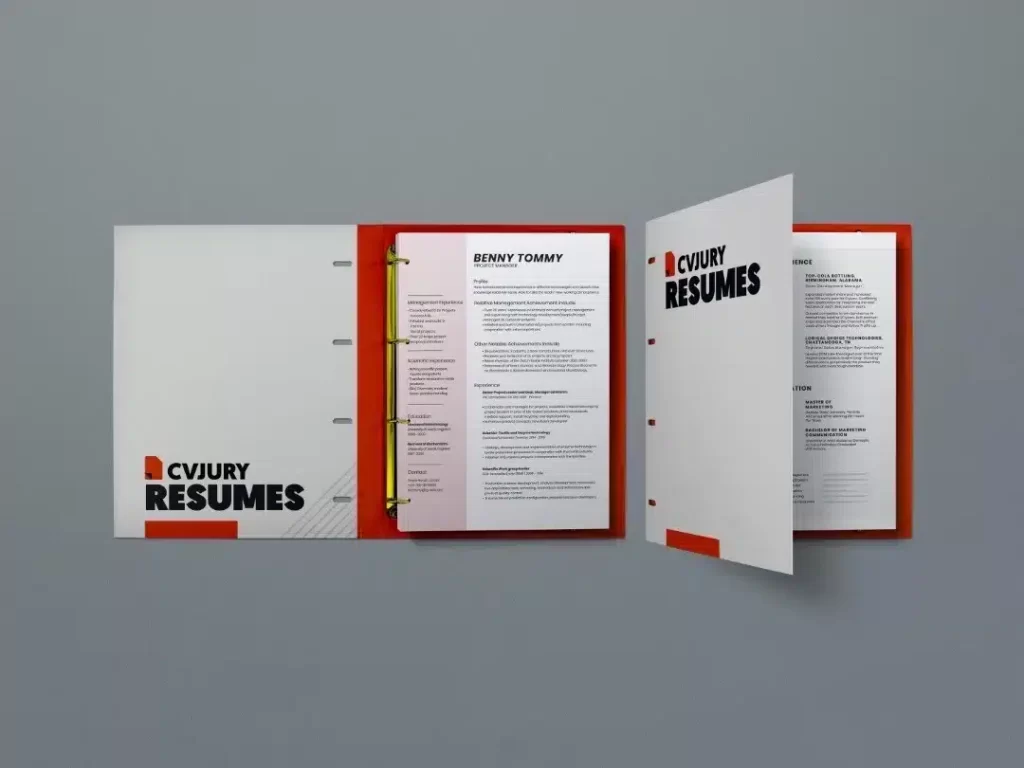
12. Add Quantifiable Achievements and Use Dynamic Words
Language skills are critical during the job application process. Thoughtful and appropriate word choices in your resume can help you better present your capabilities and skills to recruiters.
We created our pre-written examples so that you can adapt them by adding measurable outcomes to boost your bullet points:
Recruiters deal with hundreds of applications; some generic words have already lost meaning. Certain words do not do enough to show off how the company can benefit from hiring you.
Conversely, using certain action verbs can demonstrate your skills while undermining your resume’s effectiveness and strength.
Therefore, using dynamic words aims to make your resume compelling and convincing.
Dos
Edit all documents. Spell-check all the documents (resume, CV, and covering letter) in your job application, so they are error-free. You can use free apps such as Grammarly or Hemingway to check the readability of your documents. They’ll suggest what to improve.
Don'ts
Never send your CV without a cover letter: Include a cover letter in your job application. The exception is if the company advertising the position instructs you not to send one. You should always send these two documents as part of your job search.
Dos
- Use present simple tense instead: for example, 'Submit or Submits', 'Returned the File'
- Use active voice instead (e.g., 'Submitted the file')
Don'ts
- Don’t use past tense for current tasks; use past tense for past events only
- Don’t use passive voice (e.g., do not write, "The file had been submitted")
Use the past tense only for activities you undertook in past job positions. Do not use personal pronouns. For example, ‘I,’ ‘We,’ and ‘Our.’
The example above assumes a silent ‘I’ before “Comply with internal controls and government regulations resulting in zero penalties in 4 years.”
Resume Action Verbs/Power Word Examples
Here are better active verbs and dynamic words to power your bullet points.
You Directed a Project
If you were in charge of a project (or initiative), instead of using “lead or led,” depending on the context, try:
- Headed
- Planned
- Operated
- Programmed
- Orchestrated
- Organized
- Oversaw
- Controlled
- Executed
- Produced
- Chaired
- Coordinated
You Envisioned and Brought a Project into Existence
And if you developed, created, or introduced that project in your organization?
Try:
- Formulated
- Initiated
- Administered
- Engineered
- Founded
- Pioneered
- Introduced
- Formed
- Implemented
- Designed
- Created
- Instituted
- Established
- Formalized
- Devised
- Launched
- Built
- Charted
- Incorporated
- Spearheaded
- Developed
You helped the business save time and money.
Candidates who have improved a team’s productivity or cost-effectiveness are highly prized by hiring managers. Try these to demonstrate how much you saved:
- Deducted
- Lessened
- Reduced
- Conserved
- Yielded
- Diagnosed
- Consolidated
- Decreased
- Reconciled
Click here for more resume active verbs.
You should use the key terms that the firm you are applying to uses to describe itself. This is an excellent way to indicate that you can uphold the company’s values.
In addition, avoid repeating the exact words. Instead, use various terms that can best describe your achievements and skills.
You can also use numbers to help potential employers better understand your accomplishments.
Numbers are usually better indicators of impact and can display your hardworking and results-oriented personality.
By quantifying your achievements, you can make a better impression on recruiters who glance at your resume. Numbers can demonstrate that you achieved something in your previous employment.
13. Proofread
Proofreading your resume is critical because it is the stage that ensures the readers will not find any mistakes in your final copy.
You can achieve this by slowly reading a hard copy and using editing tools like Grammarly and Spellcheck.
Other tactics include eliminating words that you’ve overly repeated, checking for missing content, or even reading it out loud.
14. Attach a Corresponding Cover Letter
An application consists of two parts ─ the cover letter and the resume. Many job seekers get worried when they learn that they need to write a cover letter.
But there is nothing to worry about, as CVJury offers opportunities to create yours. Do it manually or ask our AI assistant, a cover letter writer, to make one in a minute.
Writing a cover letter is straightforward. Think of it as a direct message to the recruiter. You should briefly explain why you are an excellent fit for the advertised job.
Did you meet the core requirements of the job description?
Your cover letter will be a preface to your resume and help fill in any gaps you might have left.
A cover letter also offers insights into your professional background to the HR manager, acting as your most effective marketing tool.
You can quickly write a cover letter using the cover letter templates available at CVJury.
CVJury offers 40 matching cover letter templates (to go with your resume). Examples:
15. Note Resume Dos and Don’ts
Resume tricks, resources, and tips sometimes understate the challenge of skillfully summarising a career on one or two pages.
Therefore, writing a resume involves more than combining a list of schools you’ve attended, skills you possess, positions you’ve held, and firms you’ve worked for.
A resume is an essential marketing document for job seekers. It is their first introduction to a firm’s hiring manager and their go-to reference for their career.
If you want to impress the potential employer when writing or updating your resume, follow these dos and don’ts to ensure your own sparkles.
Dos
Customize your resume each time –
Tailor your resume for every position you are applying for by highlighting the expertise and qualifications that match the specific job requirements.
Demonstrate your tech skills –
In the skills section, summarise the technologies and software you can efficiently use. Note the proficiency level. And the number of months or years you have used each one.
Consider the job listing to determine which software is essential to include in the skills section.
Note your accomplishments –
List any special awards or recognitions you’ve received. You can also note participation in relevant expert organizations, workshops, or conferences where you’ve spoken.
Highlight your achievements –
As you list your past positions, provide tangible examples of how the project you worked on affected the firm’s bottom line.
Examples include broadening the customer base, increasing sales, or reaching target markets.
Inform your references that they may get emails or calls about you –
Send them your most recent resume so they can have current details about your accomplishments and other facts.
Keep it up to date –
Even if you are not hunting for a job, update your resume each time you complete a large project, take courses, or accept a new job.
If you regularly keep your job application materials up to date, they will seem less of a burden.
DON’TS
Here are some things to avoid.
Misrepresent your job experience or education –
Putting incorrect information in your resume’s Education or Work History section can lead to termination. Be honest in every job application.
Give reasons for leaving every job.
Some hiring managers may ask you why you left some of your jobs. Be ready to explain why you left, but keep the information private from your resume.
State that references are available upon request –
Recruiters usually assume that job seekers can offer reference contacts upon request. Some firms request the names up front. Follow the instructions in the posted job.
Worry about using precise dates –
Remembering the exact date you began a job ten years ago is difficult. So, using the month and year you started and left every position is sufficient.
Get too personal –
When writing about your professional experience, do not include personal information like your height and photo (unless it’s acceptable or required in your country).
The other things to avoid are marital status, social security number, or religious affiliations in your resume.
This way, you will avoid exposing yourself to unconscious and conscious biases on the hiring manager’s part.
Include your company email address or phone number –
Using your phone number and email address instead of your professional email address or phone number.
Place the contact information in the resume header.
16. Forward Your Draft to Our Expert Resume Writers for Review
At CVJury, you can get high-quality resumes in minutes using the power of artificial intelligence (AI CV) and deep learning, which our app deploys.
We offer different resume examples that act as a guide. Our resume templates and resume builder create unique resumes.
Do you want a cover letter? Then, we advise you to use a matching cover letter template as your resume template. Select that option in our builder.
Our experts will help you review your documents, both the resume and the cover letter.
We want to ensure that your final documents are perfect and will be the most effective tools for your job application.
Our resume writers are experienced in the craft. So, they will help you develop documents that fit the job descriptions, intrigue employers, and make them want to hire you.
Our expert resume reviewers will be the bridge between your success as a job seeker and your future employer. Best of luck!
Final Thoughts
A well-written resume is a foundation for your job search. You must develop a winning and sound strategy to find a good job. A great resume is the first step to getting the job you want.
You can get replies from most companies you apply to with good resume writing skills. Yet, if your resume is poor, you can wait weeks or months before getting a response.
By following our best resume advice and using our resume templates, you can become an expert at resume writing.
So far, the essential lessons we’ve learned are to use the appropriate resume builder, concentrate on achievements, and highlight transferable skills.
Tailoring the document for the job and including the must-have resume sections are the other lessons.
There you have it! In the comments, let us know if you have any questions about how to write a resume.
Further References
- Resume work experience section
- More CV and resume tips
- 18 common cover letter mistakes
- How to make yourself valued at work
Job Seekers Also Asked (FAQs)
How Do I Write a Simple Resume?
A simple resume should contain elements that highlight your best achievements and skills to the employer.
The process will entail selecting the format of your resume, generating a list of your contact information, creating a resume objective or summary, creating a section for achievements and work experience, and an education section.
The others include your educational background, listing all your skills related to the job position, and adding any relevant sections.
What does a good resume look like in 2025?
A resume might assume any of the three formats: functional, reverse-chronological, or combination.
However, the reverse-chronological format is still prevalent even in 2025, so it is the best option.
What are the 5 steps to writing a resume?
Creating the perfect resume includes the following:
- Cleaning up old information
- Customising it to fit the requirements of the job you are applying for
- Including verifiable achievements and quantitative results
- Creating a professional summary at the top of your resume for easy scanning by the HR manager
- Ensuring your final design takes care of issues concerning consistency in fonts, text size, and headings throughout your resume.
What is the format of a resume?
A resume can be in either a chronological, functional, or hybrid (also called combination) format.
Each resume formatting method has specific pros and cons and will play a massive role in your job application.
Chronological resume format
Many job seekers use this simple resume writing format, which is effective. The chronological resume format demonstrates relevant work experience very well.
It mainly emphasizes employment history, whereas the educational background items and skills follow.
Pros:
- Recruiters are familiar with it
- Shows career advancements
- Places emphasis on the pertinent job experience
Cons:
- Displays gaps in employment
- Fails to emphasize unique values and skills
Ideal for ─
- Job applicants whose work experience is highly relevant to the job description.
Functional resume format
The functional resume is also called a skills-based or competency-based resume.
Instead of emphasizing work experience, it focuses more on the skills required in the job description.
This format is excellent for showcasing your skills to hiring managers.
Pros:
- Concentrates on your abilities and skills
- Reduces focus on work experience
Cons:
- Recruiters do not prefer it
- Does not include work experience prominently
Ideal for ─
- Job seekers who lack relevant work experience
Hybrid resume format
The hybrid resume format is also known as the combination resume format.
It differs from chronological and functional formats in that job seekers highlight their skills and work experience, giving them equal significance.
Hybrid resumes have a flexible layout and are suitable for applicants with extensive work histories.
Pros:
- Emphasises experience and skills equally
- Combines the best elements of functional and chronological formats
- Offers adequate space for resume keywords
Cons:
- It’s impossible to use this format to hide resume gaps
Ideal for ─
- Most job seekers
What job sites should I search for a job on?
22 Top Job Boards and Sites
1. AdZuna
5. CVLibrary
9. Job.com
10. Jobserve
11. Jobs.ac.uk
12. Jobrapido
13. LinkedIn
14. LinkUp
15. Monster
16. Robert Half
17. SimplyHired
18. Snag (Formerly Snagajob)
19. US.jobs
20. USAjobs.gov
21. Totaljobs
22. ZipRecruiter
Job Website/Type of Jobs
1. Angel.co − Startup
2. Behance.com − Creative
3. ConstructionJobs.com − Construction
4. Dice.com − Information Technology
5. EFinancialCareers.com − Finance
6. HealthECareers.com − Medical
7. Idealist.com − Nonprofits
8. IEEEjobsite.com − Engineering
9. JobsInSports.com − Sports
10. Mashable − Marketing & Technology
11. Poached − Restaurant
12. Problogger.com − Writer
13. SalesGravy.com − Sales
14. StackOverFlow.com − Programming
15. TalentZoo.com − Marketing
16. TheLadders.com − High-Level Pro2
